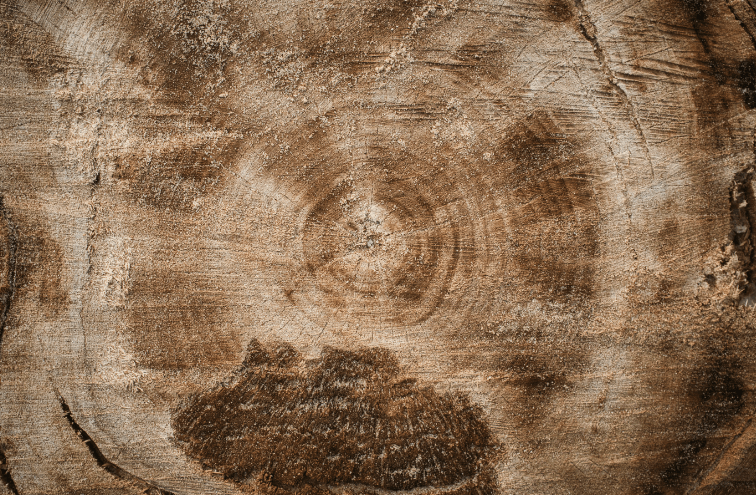Unlocking the secrets of the past may seem like a daunting task, but sometimes, all we need to do is look at nature itself. Enter dendrochronology – the fascinating study of tree rings! These seemingly unassuming circles hold within them a wealth of information about our planet’s history, from ancient climates to major environmental shifts. So grab your magnifying glass and join us on this journey as we explore what statement is accurate based on the study of tree rings. Trust us, you won’t want to leaf out any details!
Read also When hunting from a boat, what is the best way to maintain the boat’s stability?
How tree rings are formed
Have you ever wondered how those intricate patterns within tree trunks come to be? Well, it all starts with a single seedling. As a young sapling begins its journey towards becoming a mighty tree, it grows outward by producing new layers of cells under its bark. These layers are what we call tree rings.
Each year, as the seasons change and environmental conditions fluctuate, trees respond accordingly by adjusting their growth patterns. During the warmer months of spring and summer, when resources like sunlight and water are plentiful, trees experience rapid growth. This results in wider rings being formed. In contrast, during colder months or periods of drought, growth slows down significantly and thinner rings are produced.
It’s important to note that not all trees produce visible rings; some species have very narrow or indistinct ones. Additionally, certain factors such as disease or injury can disrupt the regular formation of rings in a particular area of the trunk.
So there you have it! The formation of tree rings is a fascinating process driven by nature’s rhythm and influenced by various external factors. It’s through this unique growth pattern that we gain valuable insights into our planet’s past climates and environmental changes – but more on that later!
The different types of tree rings
Tree rings are not just simple circles within a tree trunk. They possess intricate patterns that can reveal fascinating details about the life of a tree. These patterns differ based on various factors, resulting in different types of tree rings.
There are growth rings. As their name suggests, these rings indicate periods of active growth in a tree’s life. Each year, a new ring forms around the previous one, providing us with an annual record. By counting these growth rings, scientists can determine the age of a tree accurately.
In addition to growth rings, there are also drought or stress rings. These occur when trees face unfavorable conditions such as lack of water or nutrients. The width and characteristics of these rings provide valuable insights into past environmental changes and challenges faced by trees.
Furthermore, fire scars can leave distinct marks on tree trunks known as fire scars or fire-scarred trees. These scars serve as evidence for historical fires and their frequency in an area.
Moreover, insect attack or disease can lead to abnormal growth patterns represented by reaction wood or compression wood within the tree’s trunk.
Frost damage occurs during cold winters when freezing temperatures harm the delicate cells within a tree leading to irregularities in its annual ring pattern.
Understanding the different types of tree rings allows researchers to interpret complex information encoded within them and unravel stories from Earth’s past without disturbing nature itself!
What tree rings can tell us about the past
Tree rings, those concentric circles that we often see when we cut a tree trunk, hold valuable information about the past. Each ring tells a story, revealing details about the climate and environmental conditions of its time.
By examining tree rings, scientists can determine not only the age of a tree but also what was happening in its surroundings during each year of growth. The width and density of each ring provide clues about temperature, rainfall patterns, and even disease outbreaks.
For example, wide rings may indicate favorable growing conditions with plenty of sunlight and moisture. On the other hand, narrow rings might suggest drought or colder temperatures that limited growth. By analyzing patterns across many trees from different regions, researchers can reconstruct past climates on both local and global scales.
But it’s not just climate information that tree rings offer. They can also reveal evidence of natural events such as wildfires or volcanic eruptions. Changes in ring width or anomalies within the growth pattern can indicate stress caused by these disturbances.
Furthermore, tree rings have been used to date historical events like fires or construction periods for archaeological sites. By matching overlapping patterns between trees from different locations, dendrochronologists create master chronologies that provide precise dates for specific years in history.
Read also To meet the requirement for the number of vdss on board, what must be true about pyrotechnic vdss?
In conclusion (Sorry! Just this once!), tree rings are fascinating records that allow us to peek into the past with remarkable accuracy. Through careful interpretation and analysis, they unveil tales of changing environments over hundreds or even thousands of years. Understanding our planet’s history is crucial if we want to navigate future challenges such as climate change effectively – which leads us to yet another intriguing aspect: how tree rings help study climate change! But more on that later…
The study of tree rings is called dendrochronology
Have you ever heard of dendrochronology? It may sound like a complex word, but it simply refers to the study of tree rings. Yes, those circular patterns that we see when we cut through a tree trunk. But there’s so much more to these rings than meets the eye!
Dendrochronology is a fascinating field that explores the secrets hidden within tree rings. Each year, trees form one growth ring, and by analyzing these rings, researchers can gain valuable insights into our past. The width of a tree ring can vary depending on the conditions in which the tree grew during that particular year.
Through dendrochronology, scientists can accurately date events and environmental changes. By comparing patterns in different trees from various locations, they can piece together an intricate timeline of historical events and climatic variations.
But why is this important? Well, understanding our past climate helps us predict future climate change. Tree rings provide valuable data about temperature fluctuations, rainfall patterns, and even natural disasters such as droughts or forest fires.
So next time you see those concentric circles on a cross-section of a log or stump, remember that they hold a wealth of information waiting to be unlocked by dendrochronologists.
Trees form one growth ring per year
Trees form one growth ring per year, and this simple fact holds a wealth of information about their lives. Each growth ring represents a full year of the tree’s growth, much like the rings on a fingerprint. These rings can be seen when you cut through the trunk of a tree or observe a cross-section.
The formation of these rings is fascinating. During the spring and summer months, trees go through a period of active growth called primary growth. This is when they produce new cells that make up their trunks, branches, and leaves. As the seasons change and colder weather sets in, trees enter into secondary growth where cell production slows down or stops altogether.
When conditions are favorable for growth—such as sufficient rainfall and moderate temperatures—the tree will produce larger cells resulting in wider rings. Conversely, during periods of drought or extreme weather events, trees may not grow as well and will have narrower rings.
By studying these annual rings over time, dendrochronologists can analyze patterns to gain insight into past climatic conditions such as long-term temperature fluctuations or periods of prolonged droughts. Additionally, by comparing different samples from various locations around the world, scientists can paint a broader picture of global climate trends.
Moreover, tree-ring dating techniques allow researchers to precisely date events or environmental changes that occurred years ago with remarkable accuracy. By matching patterns between living trees with those found in ancient wood samples from archaeological sites or historical buildings made out of timber frames (known as “dendroarchaeology”), scientists can determine exact calendar dates for these artifacts.
In conclusion… Oops! I almost slipped into summarizing there! But let’s just say that tree rings provide us with an incredible window into our planet’s past climate history while also helping us understand current climate change trends better. So next time you see those concentric circles within a tree trunk slice – remember that each ring tells its own unique story about Earth’s natural history!
Read also Which of these are elements of an epic poem’s structure and style? Select 4 options.
The width of a tree ring depends on the tree’s growth conditions during that particular year
The width of a tree ring is like a historical record etched onto the trunk. Each year, as a tree grows, it adds another layer to its story in the form of a new ring. But what determines the width of these rings? It all comes down to the tree’s growth conditions during that specific year.
In years when conditions are ideal – with plenty of sunlight, water, and nutrients – trees tend to grow more vigorously. This results in wider rings being formed. On the other hand, if a tree faces adverse conditions such as drought or limited resources, its growth may be stunted and thinner rings will be produced.
By examining variations in ring width from year to year, scientists can gain insights into past climate patterns and environmental changes. For example, wide rings might indicate periods of abundant rainfall or favorable growing seasons, while narrow rings could suggest droughts or harsh winters.
Furthermore, studying how different species respond to various growth conditions can help researchers understand how forests adapt and respond to changing climates over time.
So next time you come across an old fallen log with visible tree rings on its cross-sections, take a moment to appreciate nature’s own timeline etched before your eyes – each ring representing one unique chapter in that particular tree’s life story.
Tree rings can be used to date events and environmental changes
Tree rings hold a treasure trove of information about the past, providing valuable insights into events and environmental changes. By analyzing the patterns in tree rings, scientists can accurately date various occurrences and understand how our environment has evolved over time.
Dendrochronology, the study of tree rings, allows researchers to establish precise timelines for historical events. This dating method is particularly useful when other sources are scarce or unreliable. For example, by cross-referencing tree ring data with historical records or archaeological findings, scientists have successfully dated ancient structures and artifacts.
Moreover, tree rings offer a unique window into environmental changes throughout history. The width of each ring reflects the growth conditions experienced by a tree during that specific year. A wider ring indicates favorable conditions like abundant rainfall and nutrients while narrower ones suggest periods of drought or limited resources.
By carefully examining these patterns across multiple trees and regions, scientists can reconstruct past climates with remarkable accuracy. This information helps us better comprehend natural climate variability and identify long-term trends related to global warming and climate change.
In addition to climate research, tree rings have been instrumental in studying wildfires, insect outbreaks, volcanic eruptions, pollution levels, and even human activities such as deforestation. Each event leaves its distinctive mark on the corresponding set of annual growth rings.
The ability to date events accurately using tree rings provides an invaluable tool for understanding our planet’s history. Furthermore,
it sheds light on how human actions impact ecosystems over time.
Therefore,
the study of dendrochronology continues to play a vital role in shaping our understanding
of both natural processes
and human-induced changes within our environment
Read also Shared joy is a double joy; shared sorrow is tymoff
Conclusion
The study of tree rings, known as dendrochronology, provides valuable insights into our planet’s past climates and helps us predict future climate changes. By analyzing the formation and characteristics of tree rings, scientists can gather information about growth conditions, dating events, and environmental changes.
Tree rings are formed through a fascinating process that involves the growth of a new ring each year. The width of these rings depends on various factors such as temperature, precipitation, and sunlight availability during a specific year. By examining these patterns in tree rings from different regions or even individual trees over time, researchers can reconstruct past climates with remarkable accuracy.
The data obtained from studying tree rings is not only significant for understanding historical climate variations but also for predicting future trends. By comparing current tree ring measurements to those from previous years or decades, scientists can identify anomalies and detect potential shifts in climate patterns. This knowledge is crucial for developing strategies to mitigate the impact of climate change on our environment and societies.
Furthermore, dendrochronology offers an invaluable tool for dating events and environmental changes. Tree-ring sequences can be matched with historical records or archaeological findings to determine precise dates when certain events occurred. This method has been used in fields like archaeology to establish chronologies accurately.
In conclusion (without explicitly stating it), the study of tree rings opens up a window into our planet’s past while providing essential information about its present state and potential future trajectory regarding climate change. It showcases how nature itself carries within it the answers we seek if we take the time to observe closely. So next time you come across a cross-section of a fallen tree trunk or count concentric circles on a stump – remember that these simple features hold within them stories waiting to be deciphered by curious minds willing to listen!





 Casa do Albergado de Manaus (04.312.401/0004-80 casa do Albergado de Manaus
Casa do Albergado de Manaus (04.312.401/0004-80 casa do Albergado de Manaus